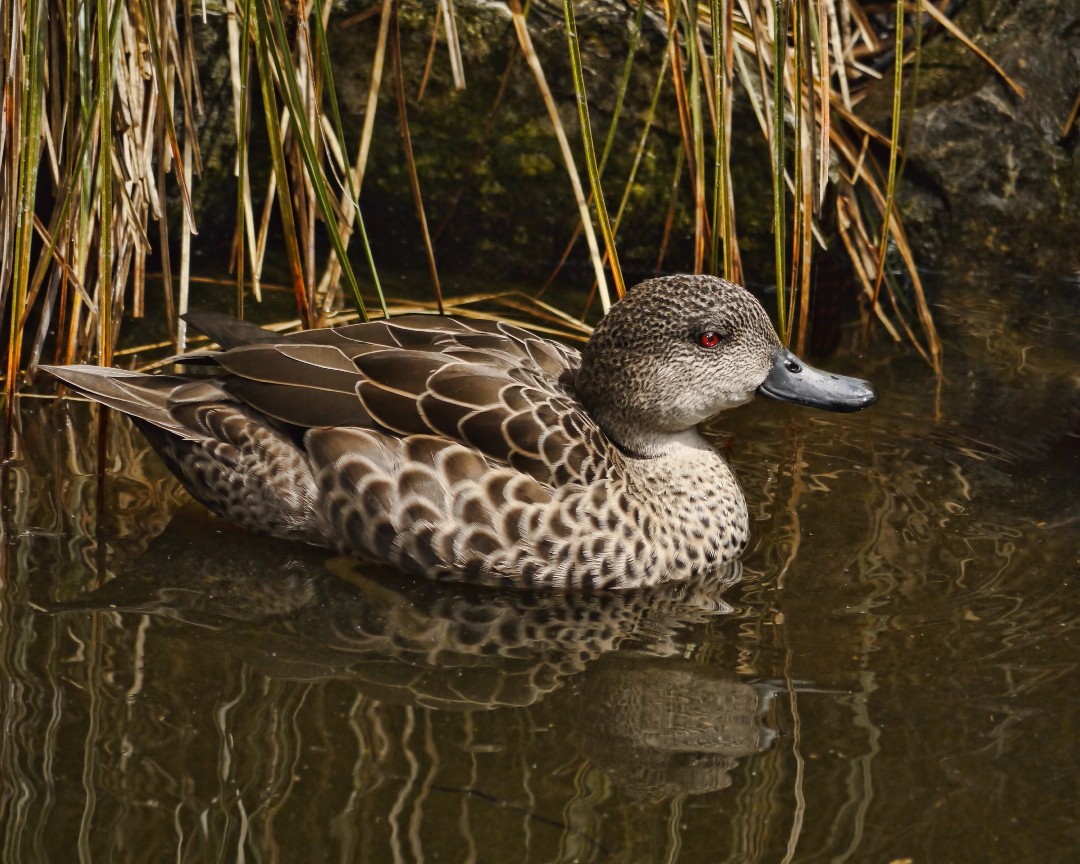Grey Teal
A species of Anas Scientific name : Anas gracilis Genus : Anas
Grey Teal, A species of Anas
Botanical name: Anas gracilis
Genus: Anas
Content
Description People often ask General Info
Description
Grey Teal (Anas gracilis) is a dabbling duck found in open wetlands in Australia and New Zealand. Grey Teal can be identified due to the presence of a crimson coloured iris in its eyes. This crimson colour is relatively more prominent in adult males. It is a mottled brown duck with white and green flashes on its wings. The male and female Grey Teal share the same colouration, in contrast to the related Chestnut Teal, whose male and female are strikingly different. Grey Teal has almost identical colouration to the female chestnut teal and the grey can only be distinguished by its lighter coloured neck and paler face. Juveniles are paler than adults, especially on the head. However, they can be identified by a dull brown eye until matured. The bill of Grey teal is a blue-grey colour with dark lining around the edges. Feet are a similar colour to that of the bill being grey. The head of a Grey Teal can be described as plain/slightly streaked, with a dark crown and cream coloured chin/throat and cheeks. The eggs of Grey Teal are a creamy white colour and are not distinctly speckled. An average egg is 49.3 mm in length and 35.6 mm in width. Grey Teal nests near its favoured freshwater lakes and marshes, usually on the ground, but also in tree holes or rabbit burrows. This is a vocal duck, especially at night. The male gives a soft preep, and the female has a loud quack. Grey Teal is a gregarious species. In Australia it is nomadic, rapidly colonising suitable habitat following rain. In 1957, large numbers fled Australia, moving to New Zealand to escape drought. It was formerly considered a subspecies of the Sunda teal, as Anas gibberifrons gracilis. Widespread throughout its large range, Grey Teal is evaluated as Least Concern on the IUCN Red List of Threatened Species. 
Size
46 cm
Life Expectancy
2-4 years
Nest Placement
Ground
Feeding Habits
Grey Teal mainly consumes invertebrates such as larvae and small crustaceans, complemented by aquatic plant seeds. With a varied diet shifting seasonally, grey Teal forages by dabbling and upending in shallow waters, and dredging in mudflats. They forage independently, forming flocks post-breeding, and feed during the day and night.
Habitat
Grey Teal's favored habitats encompass wetlands, notably lagoons, swamps, and shallow lakes with a preference for freshwater, though they are also found in brackish and saline environments. Ample vegetation is crucial for nesting concealment. Typically inhabiting low elevations under 300 meters, grey Teal is adaptable and may inhabit sewage plants and coastal lagoons, as well as agricultural areas like rice fields.
Dite type
Omnivorous
People often ask
General Info
Feeding Habits
Bird food type
Species Status
Not globally threatened.
